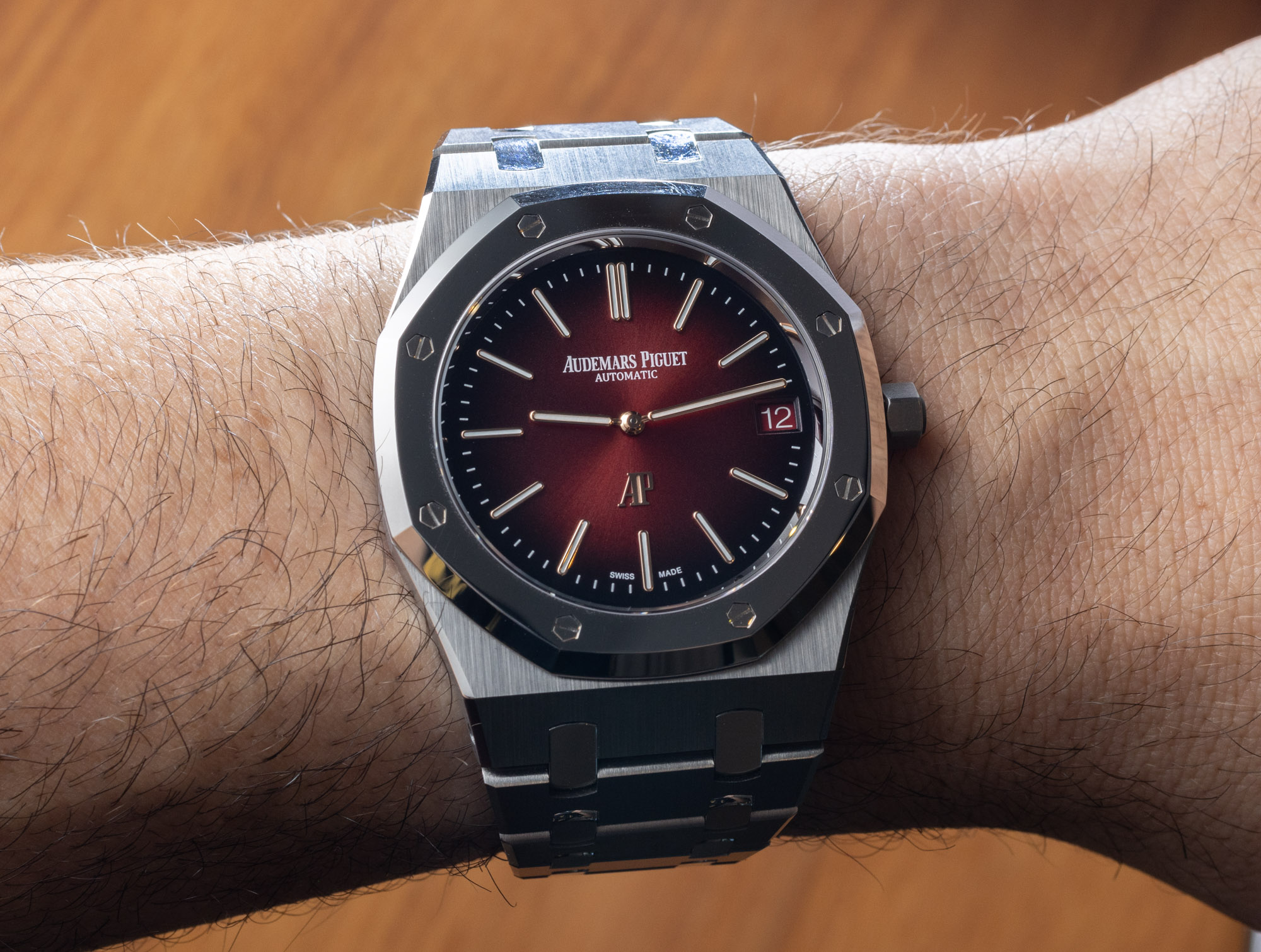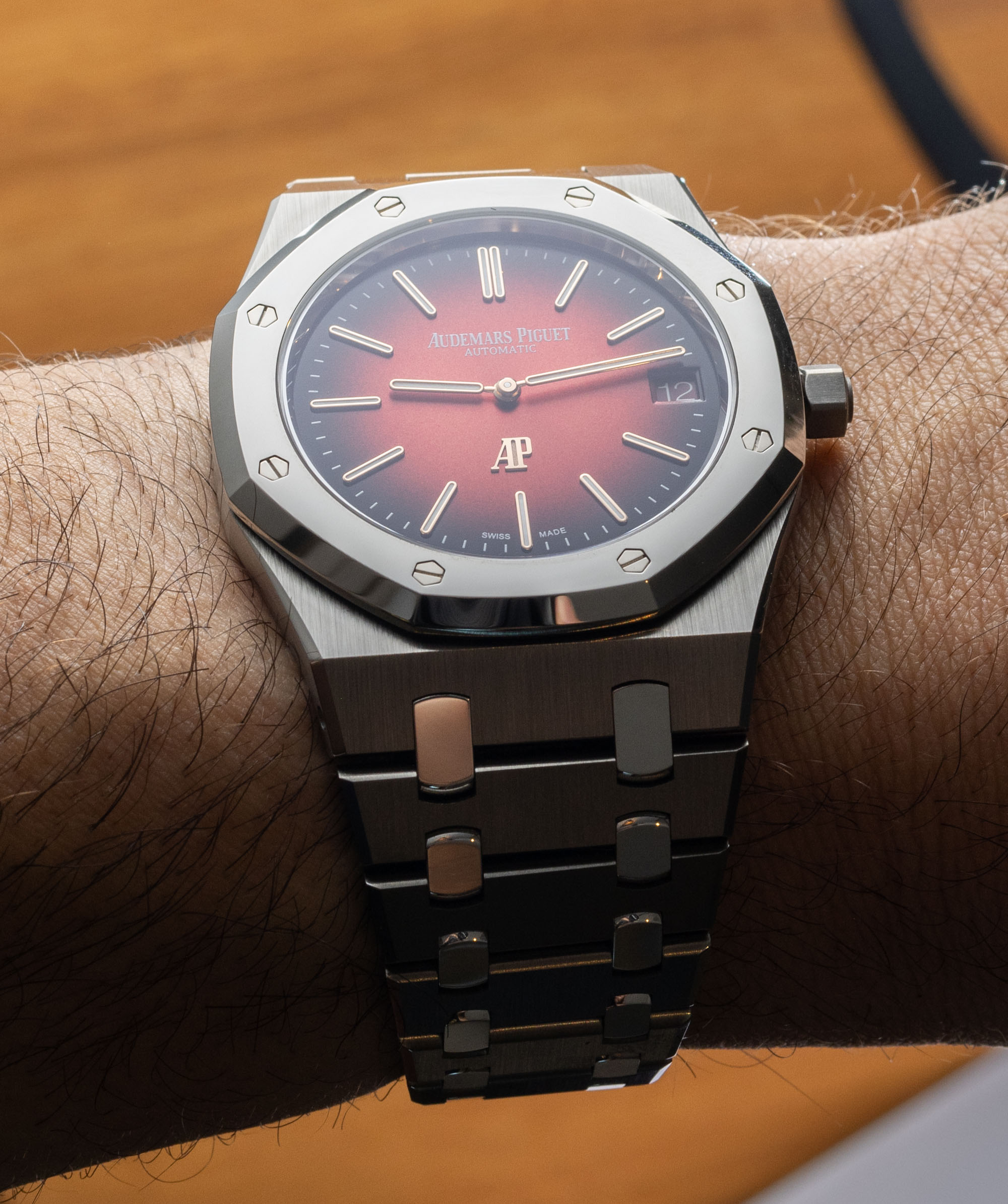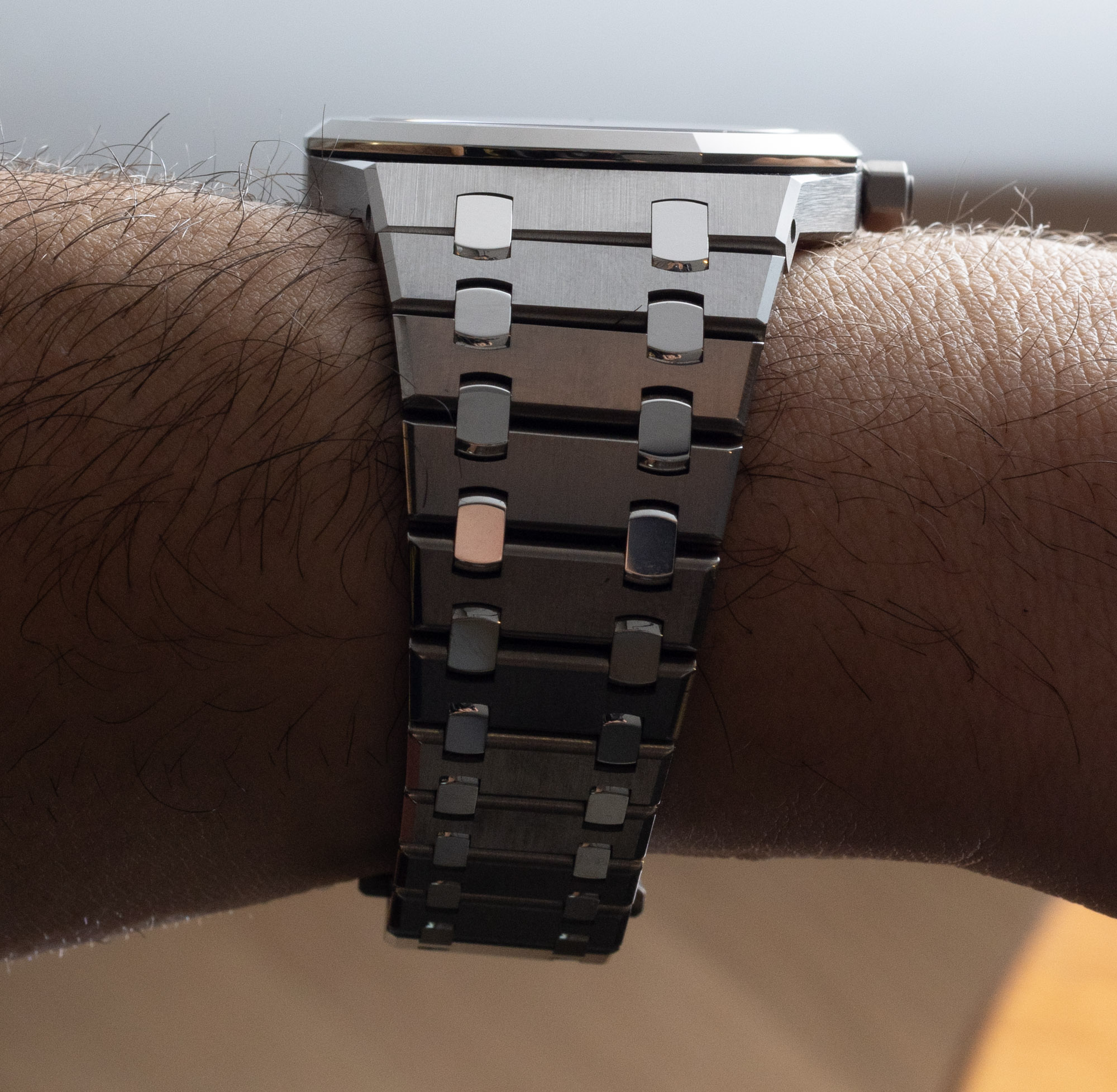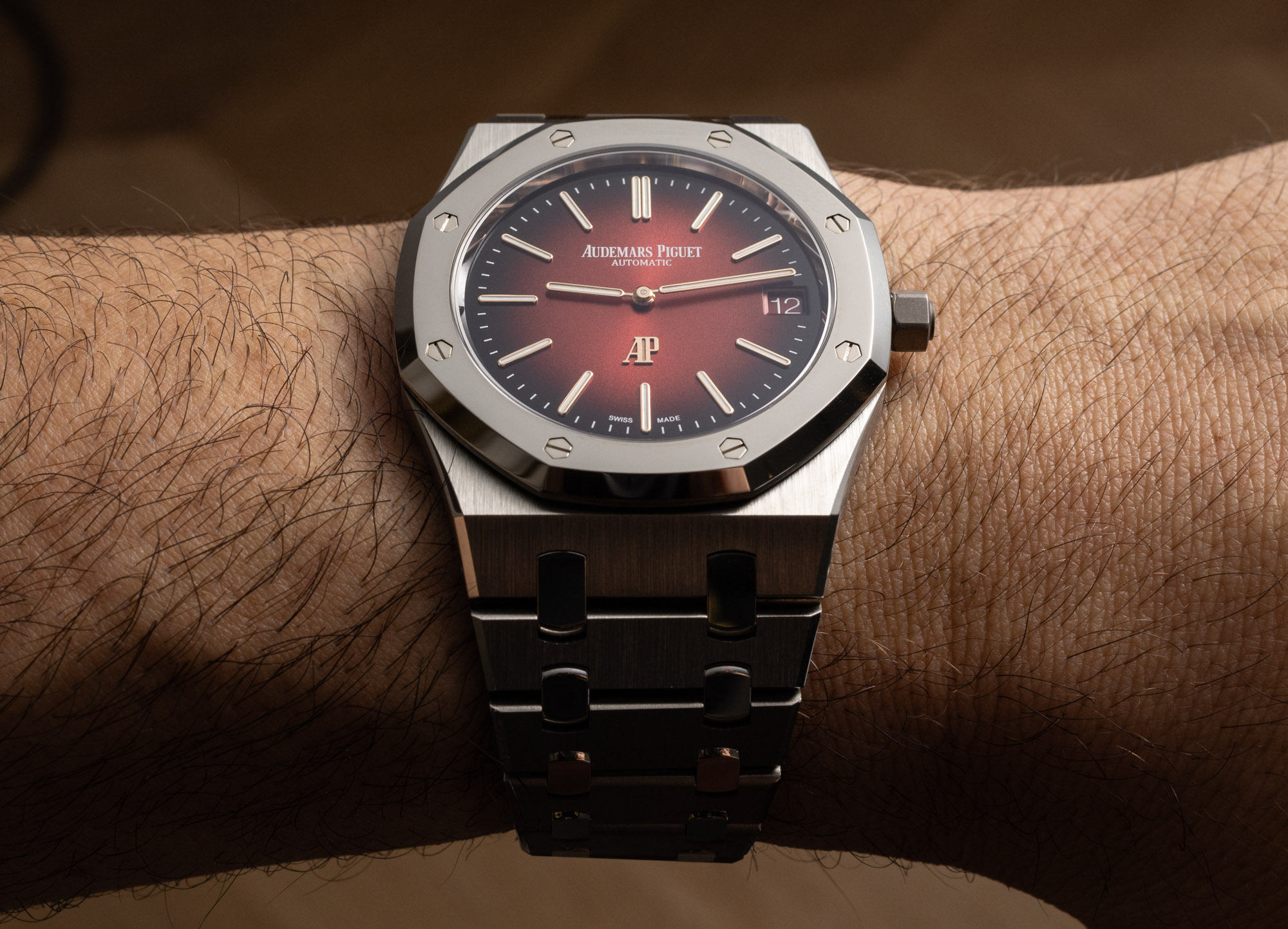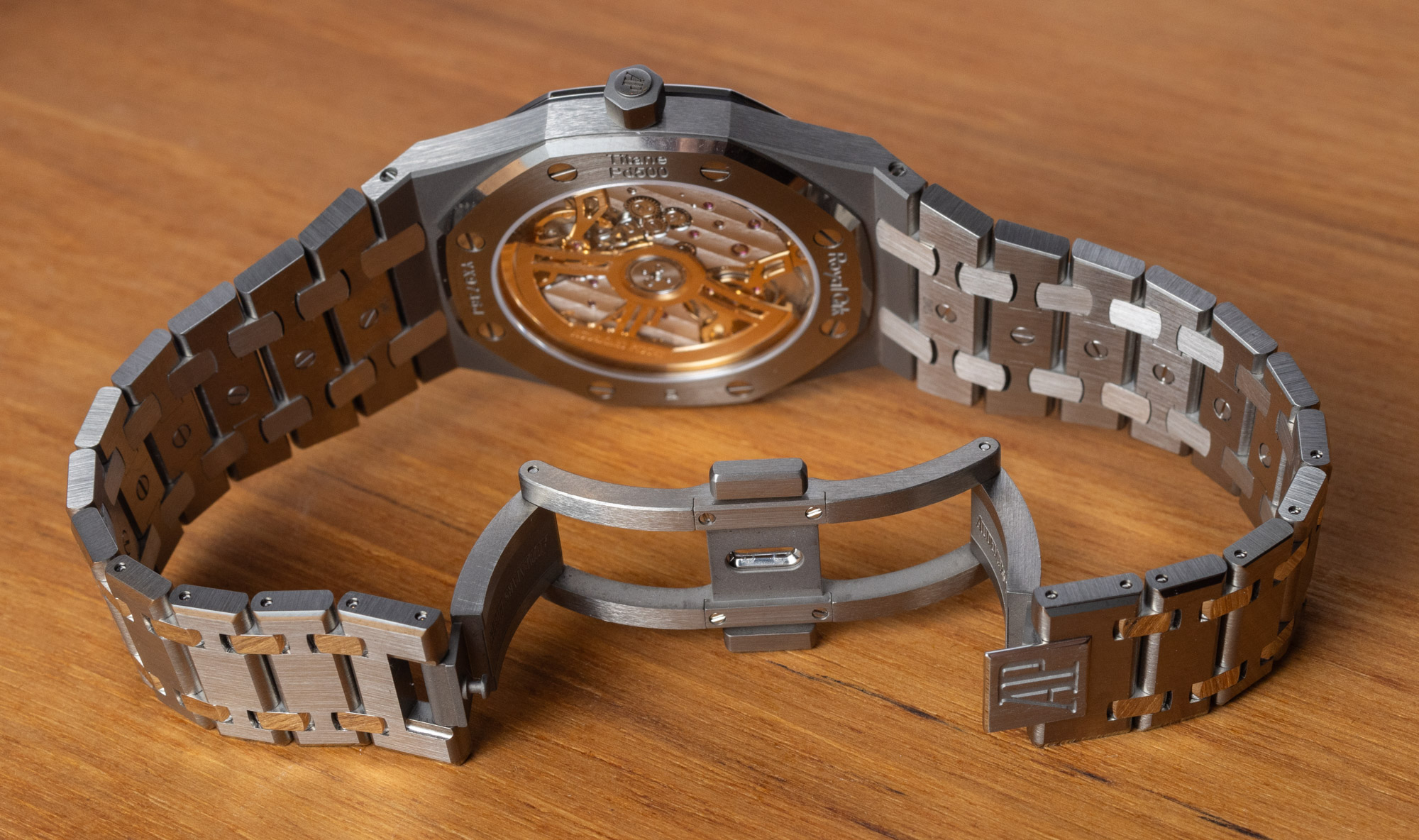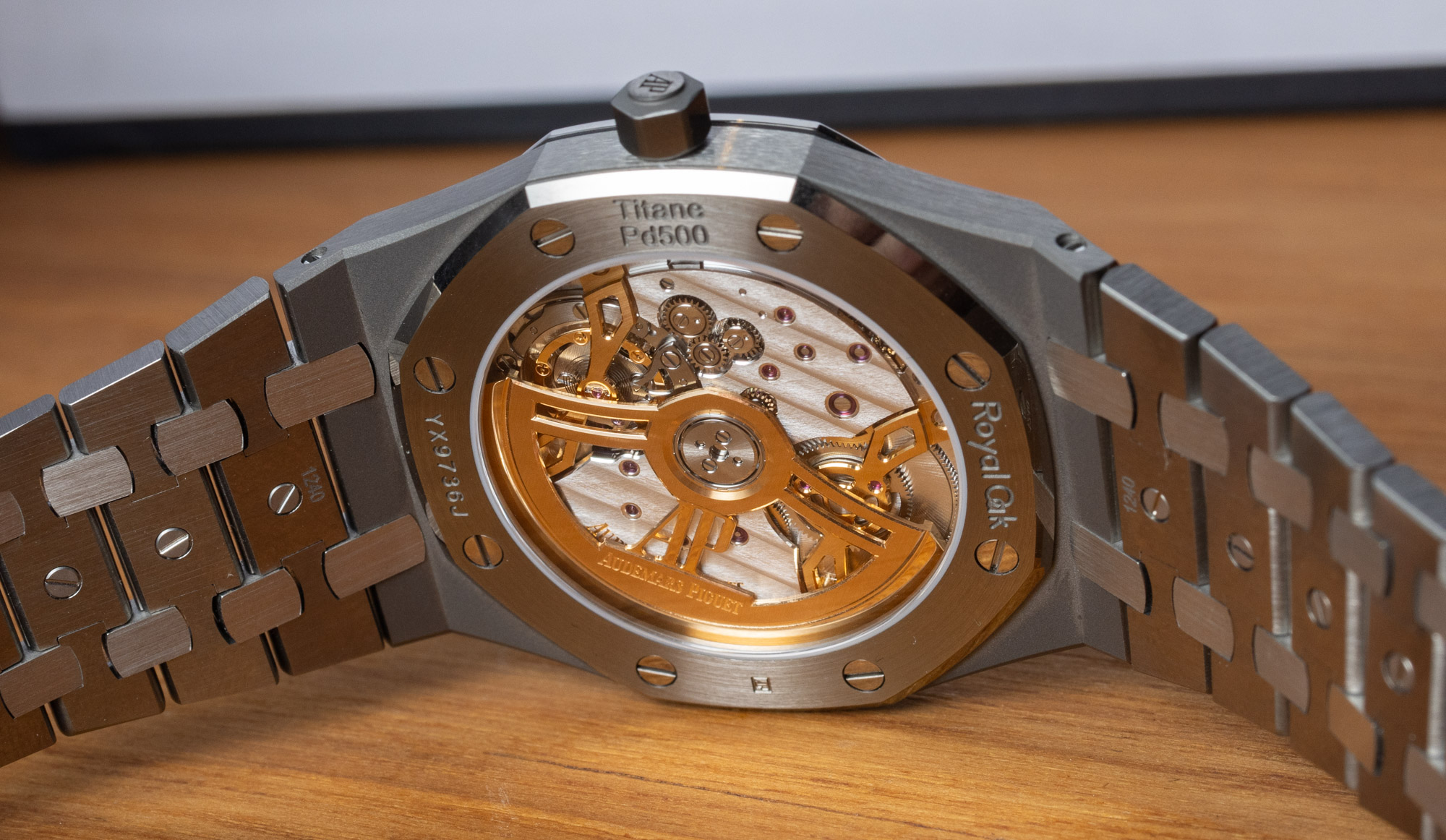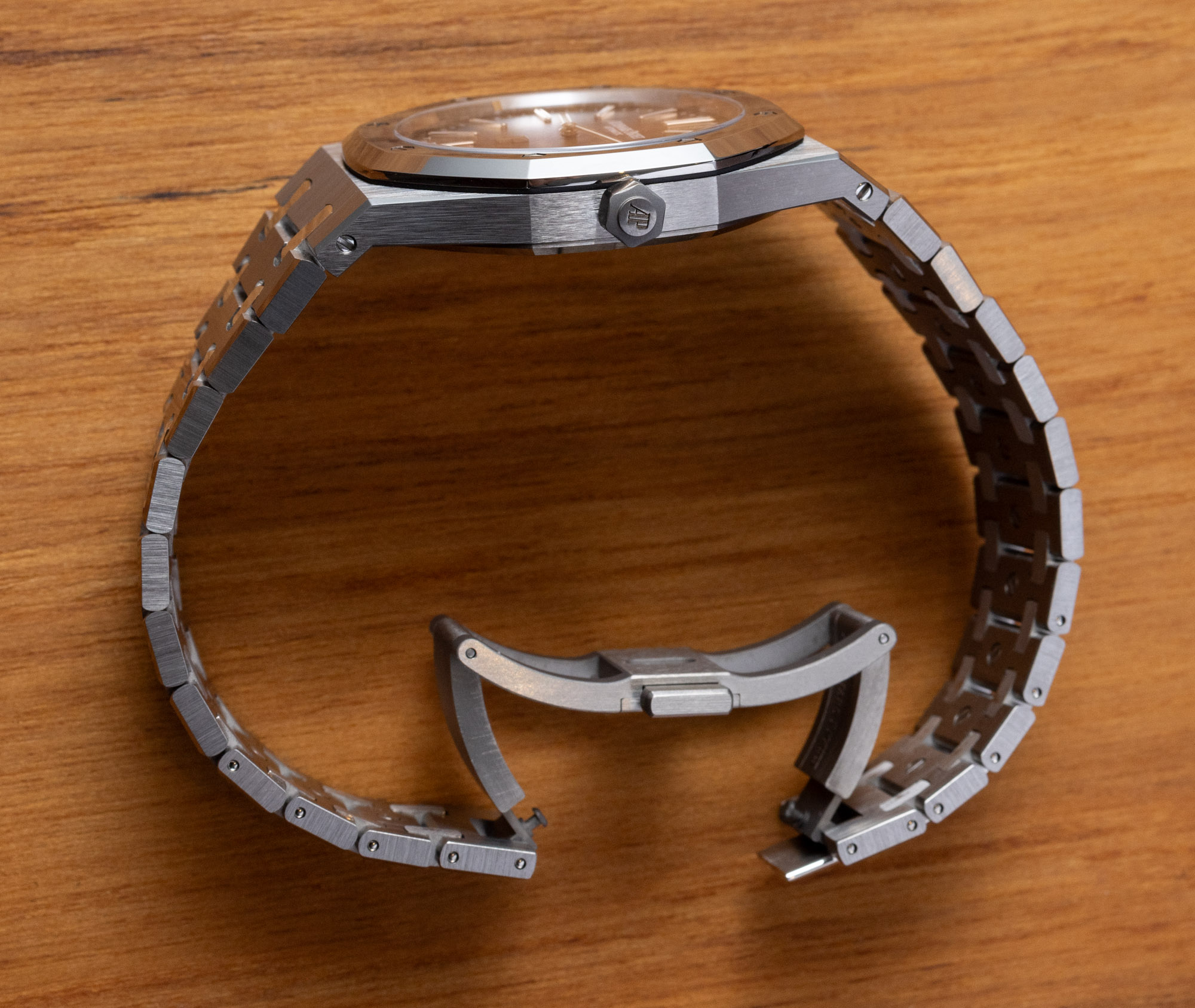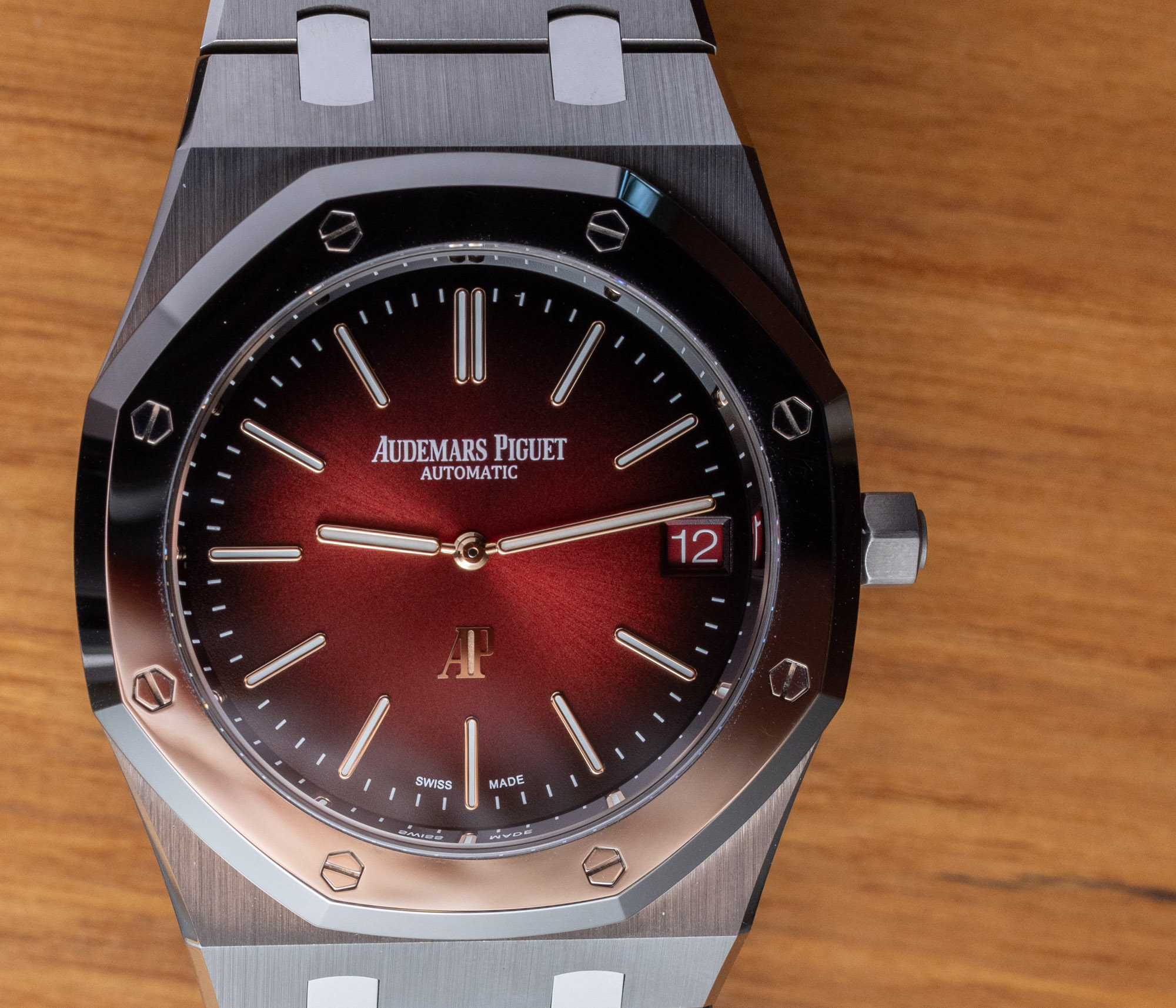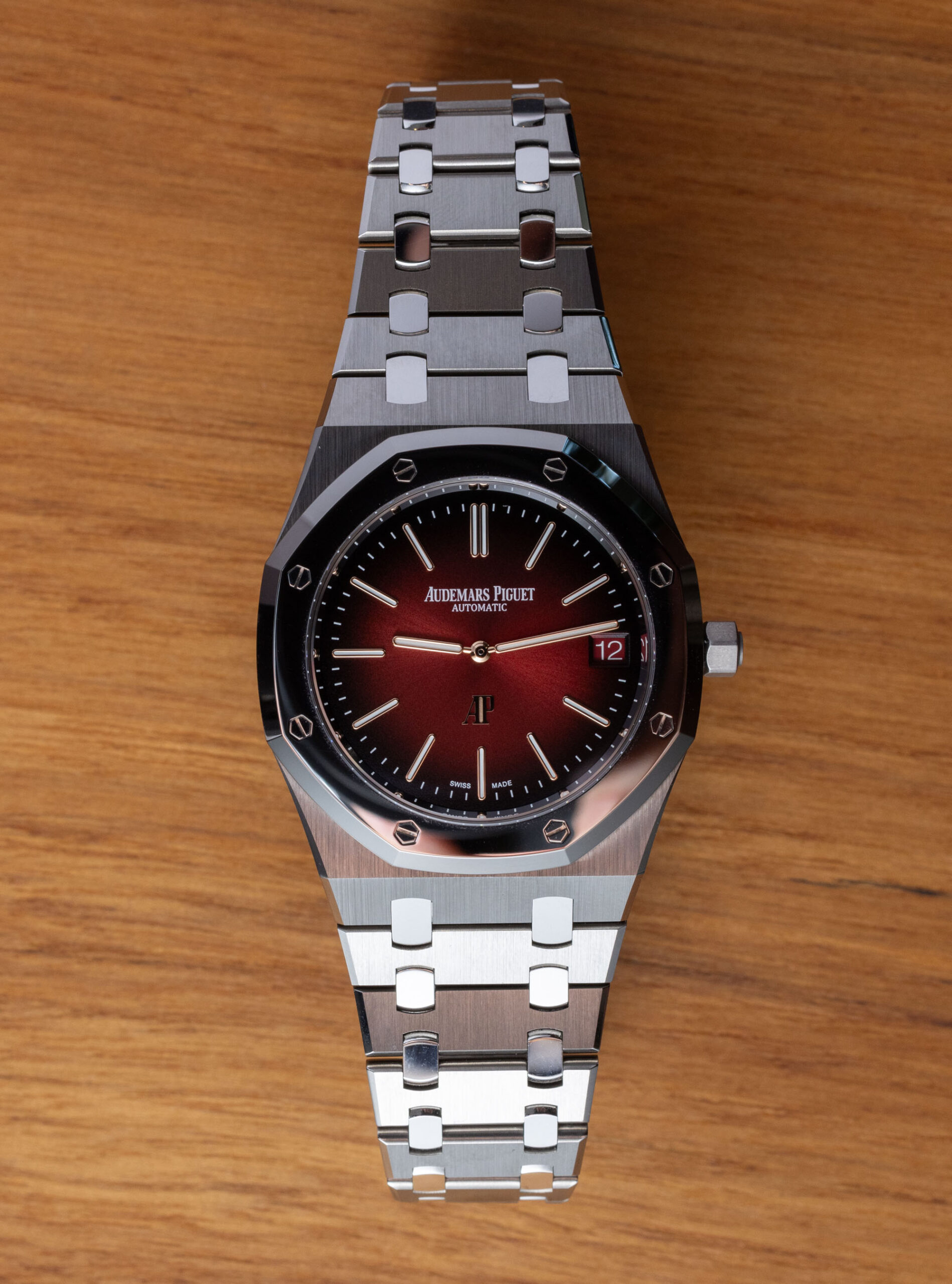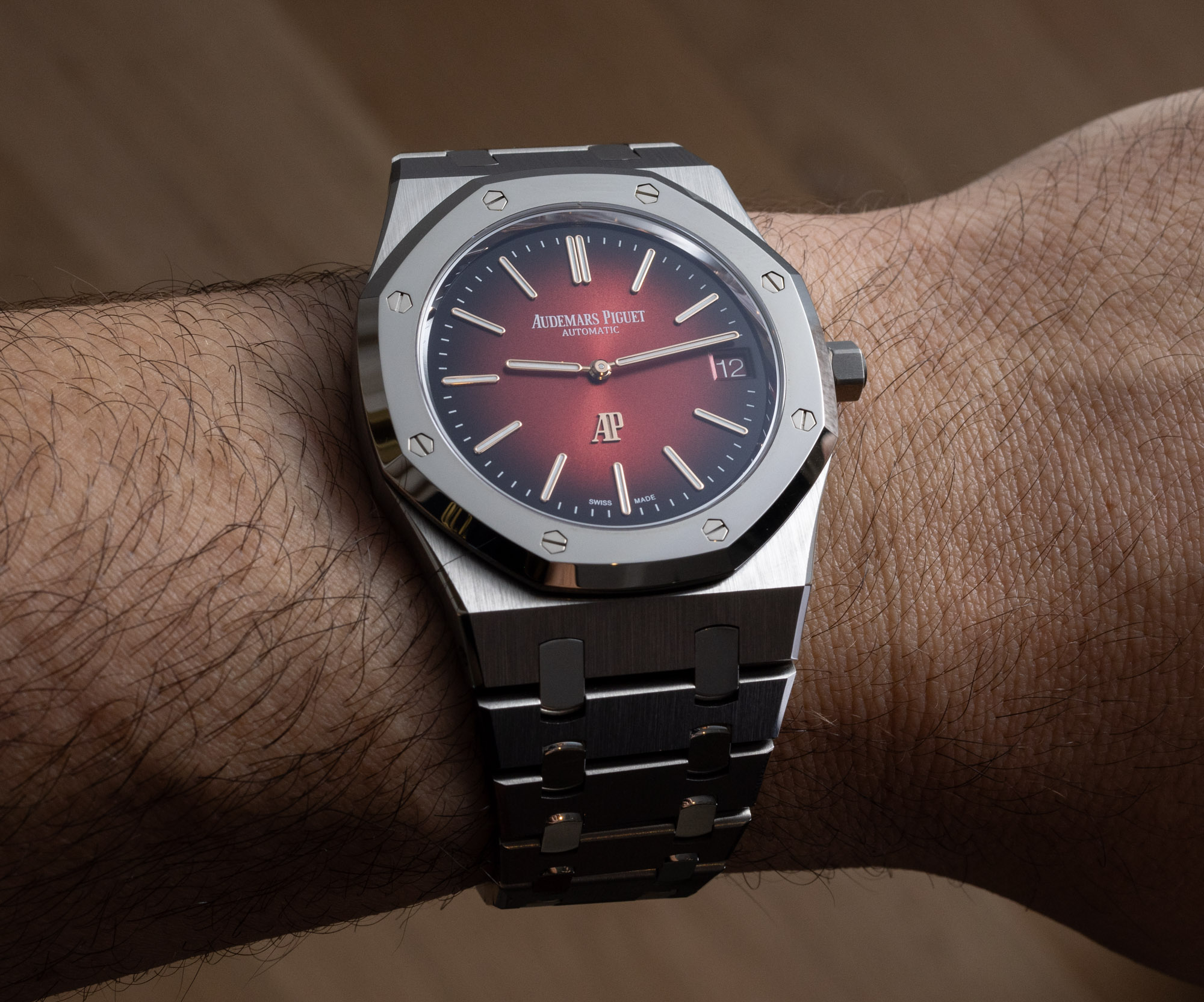
Even with all the look-alike watches trying to either directly or symbolically emulate the Royal Oak, the original (and often most expensive) version by Audemars Piguet is still an amazingly beautiful thing. Originally from 1972 when Gerald Genta designed the first Royal Oak, this design is the undisputed leader of the integrated bracelet watch pack in terms of both popularity and, according to many people, taste and refinement. Today, I go hands-on with one of the more recent and certainly pricey versions of the Royal Oak, the 2023 reference 16202XT.OO.1240XT.01 Audemars Piguet Royal Oak “Jumbo,” which has a case and bracelet that combines titanium and bulk metal glass components. Named “Jumbo” by previous standards when the watch was released, it also features a gradient-style smoked burgundy red dial (a color that has been very popular with me lately) and the still new in-house Audemars Piguet Caliber 7121 Extra-Thin automatic movement.
While the look and feel of the Audemars Piguet Royal Oak hasn’t radically changed much over the last several years, the circumstances and experience around buying one have. The Audemars Piguet brand has transformed itself from being merely a watchmaker to being a multi-faceted lifestyle brand selling both jewelry-style watches and entrance into the brand’s client club. Buying and owning an Audemars Piguet watch has become a more exclusive experience, with the watches signaling not only Swiss horological history but also a certain lifestyle preference and placement in the social status hierarchy. Much of this is achieved through a vertically integrated approach to making and selling watches. Purchasing an Audemars Piguet begins by developing a relationship with the brand. That relationship takes place at their own stores as well as retail/hang-out spaces the brand calls its Audemars Piguet Houses. It is an interesting and spirited approach to reimagining what a luxury watchmaker can be like in the 21st century. If anything, Audemars Piguet’s business model is one brand’s approach to staying both profitable and relevant while establishing a long-term approach that will continue to earn returns so long as the brand itself remains properly engaged in pushing the brand as much as it is about pushing the products.
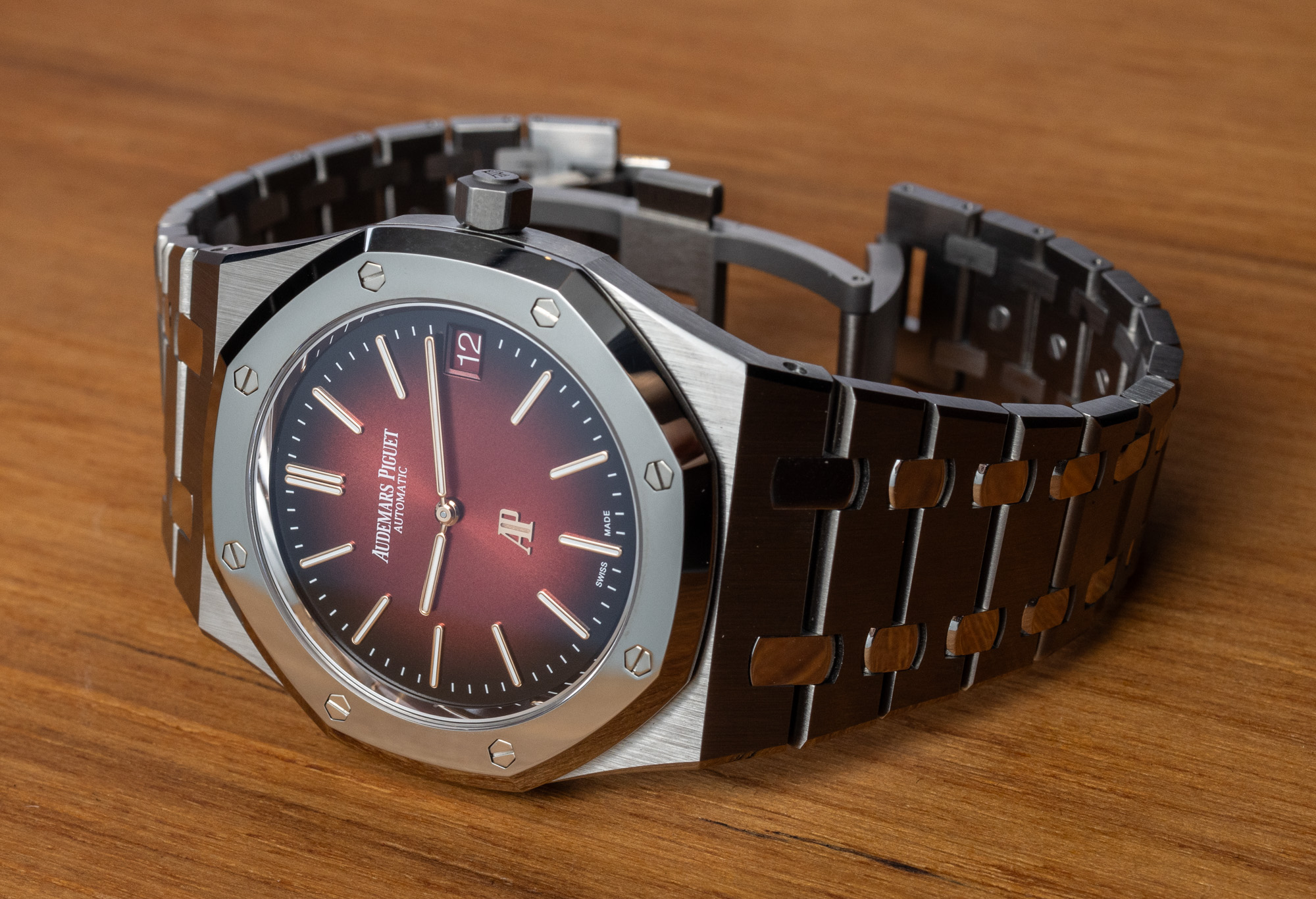
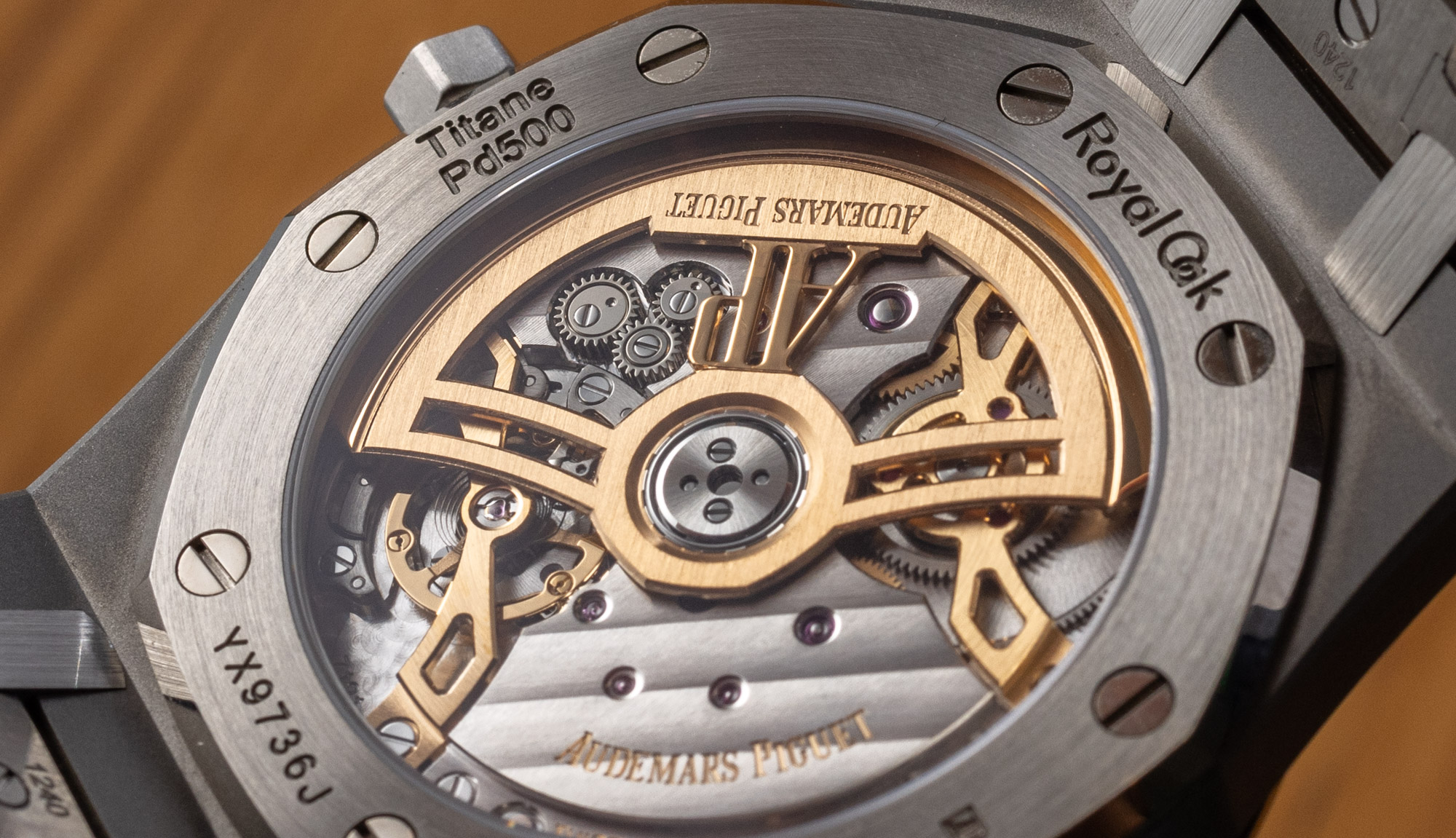
I digressed a bit away from this nearly $100,000 Royal Oak watch because the context around it and the brand are an important part of understanding its role circa 2023. First, I must begin with the question of what bulk metallic glass is. The compound was trialed by Audemars Piguet as a watchcase material for a unique watch it produced for the Only Watch 2021 auction. This reference 16202XT.OO.1240XT.01 is the first production watch to include bulk metallic glass as part of the case/bracelet construction. I am not an expert on this category of specially formed metal alloys, but I will explain what I understand to be relevant for watches. There has been a lot of industrial excitement about bulk metallic glasses because the material has different capabilities when compared to traditionally formed metal. There is no one substance that you can call “bulk metallic glass.” Rather, this is a category name for a production process that can be used to form a large number of alloys (mixtures of metals and potentially other substances). Also, there is no one production process for forming bulk metallic glass as this is an area of ongoing innovation. Currently, the production of bulk metallic glass is the primary factor limiting its use. The limited availability is probably why Audemars Piguet feels comfortable assigning it as a very high-end exotic luxury material. With that said, the particular bulk metallic glass alloy used for this watch is 50% palladium — which is evidenced by the “Pd500” label on the rear of the watch. It isn’t clear what the other 50% of materials in the alloy are, but Audemars Piguet specifically mentions that the bulk metallic glass they use is highly scratch-resistant and able to be polished with a high luster.
I am somewhat reminded of the situation with sapphire crystal cases when Richard Mille first released them. While you can get a watch with a sapphire crystal case for a few thousand dollars today, the trend debuted with watches costing over $1,000,000 USD. Bulk metallic glass is an exotic material that is likewise ideal for a lot of wristwatch cases and bracelet applications. That means more bulk metallic glass is coming to the watch space soon, and the price will inevitably fall. Early adopters like Audemars Piguet can charge a premium for their first watches as being first-to-market in the luxury space does come with that type of prestige.
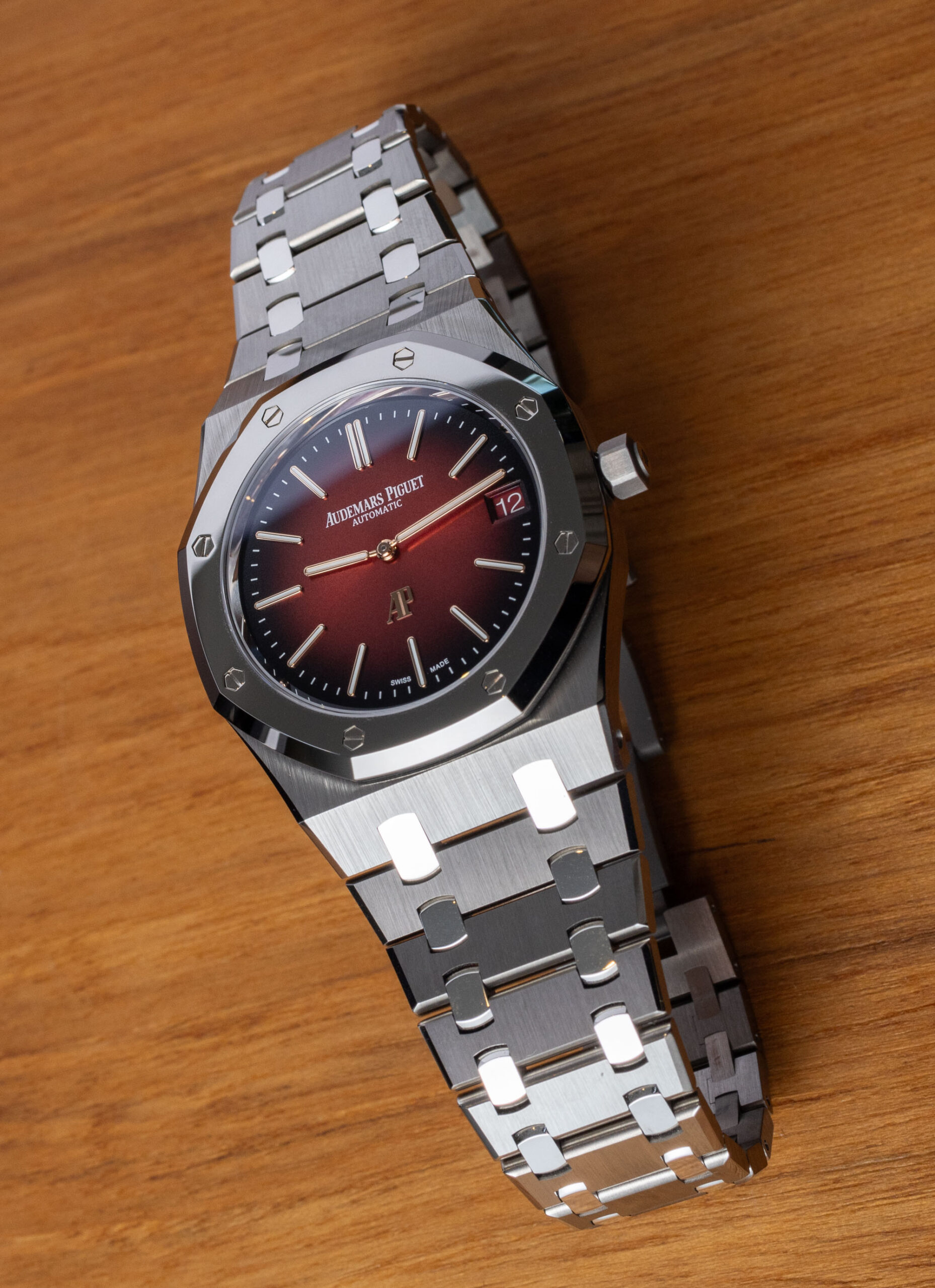
Other than this version of the 39mm wide Royal Oak “Jumbo” Extra-Thin being very beautiful to look at, I think the use of bulk metallic glass is the main part of its story. With that said, if you have the money and don’t really care about applied materials science, then you’ll enjoy looking at this attractive timepiece on your wrist. If you care about materials, then you’ll probably want to know why bulk metallic glass is interesting and how it could make an upcoming timepiece even better. The main advantage of bulk metallic glass is the density of the material. The atoms in the structure are more closely packed together because they pool around one another before the metal alloy hardens. This is opposed to a crystalline structure, which is an ordered geometric form, but one that involves space between the atoms. There are weird ways that bulk metallic glasses are formed using methods such as flash-freezing molten metal or forming a metal structure molecule by molecule in a physical vapor deposition (PVD) chamber. Each of these bulk metallic glass formation processes is tricky, expensive, and often time-consuming. There are also limitations to the size that bulk metallic glass pieces can be produced.
Why then is this closely-packed atomic structure metal useful for wristwatches? My understanding is that because it is much harder (thus scratch-resistant) and can be polished with a very attractive and long-lasting finish. To really understand why this is, imagine polishing a jagged surface like a crystalline structure or something as smooth as glass. Which of the two is going to result in a more reflective surface? Clearly the glass-like material. In any case, I hope to get to know more about the industrial process behind making bulk metallic glasses, and I also look forward to seeing what forms of the material show up in wristwatches in the years to come. Just one little piece of advice for Audemars Piguet in regard to this material: Can you please brand it? I know the palladium alloy used might not be exclusive to AP, but the brand can still easily come up with a term for it. Watch brands love coming up with material names, and rarely is there anything that special about some new gold alloy. A bulk metallic glass alloy by comparison is much more interesting from the standpoint that it can allow for the creation of parts in new sizes and with new finishes. So, I think that Audemars Piguet might want a special trademark name for bulk metallic glass in a watch (if for no other reason than the current name is both unsexy and imprecise).
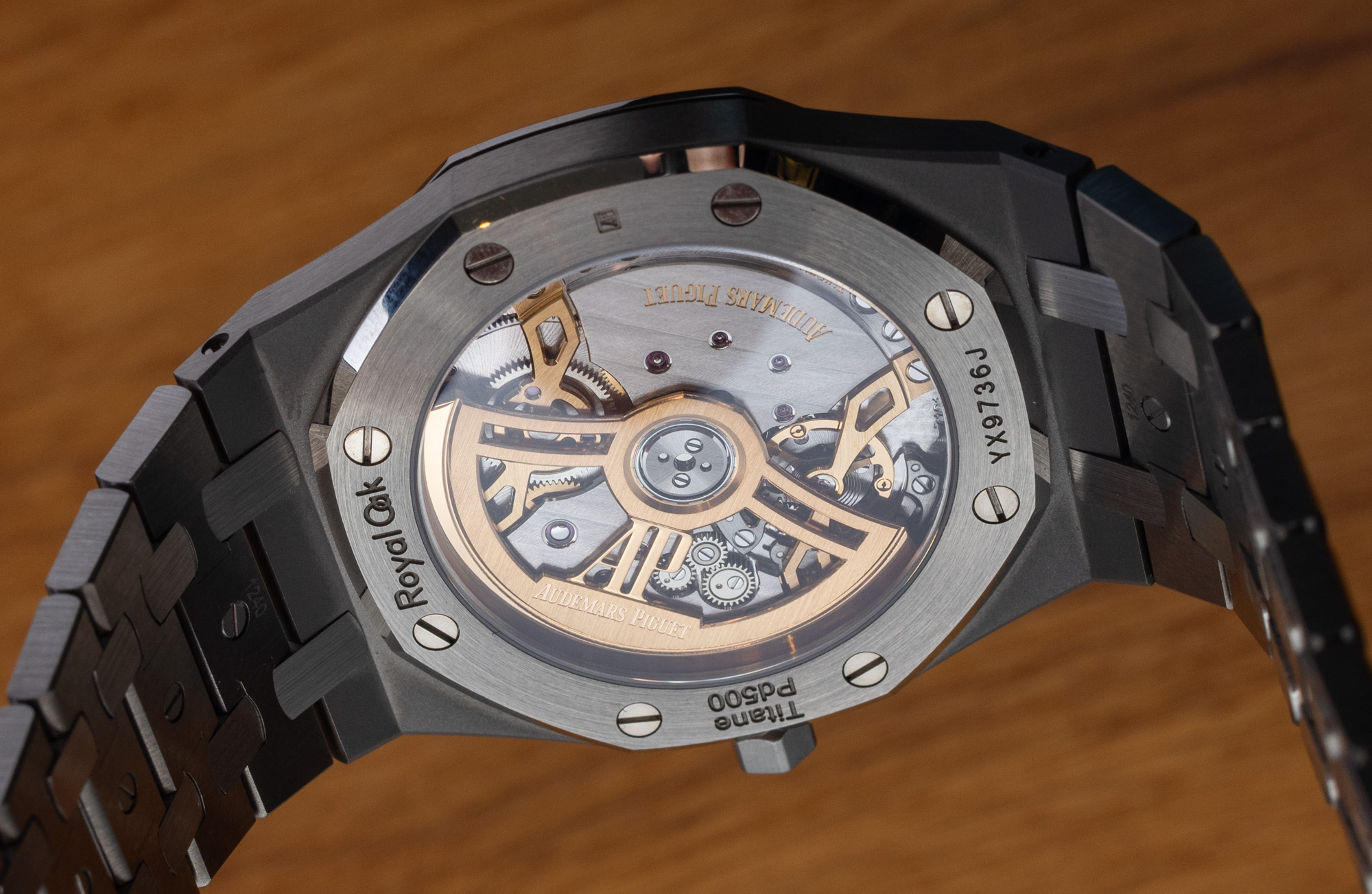
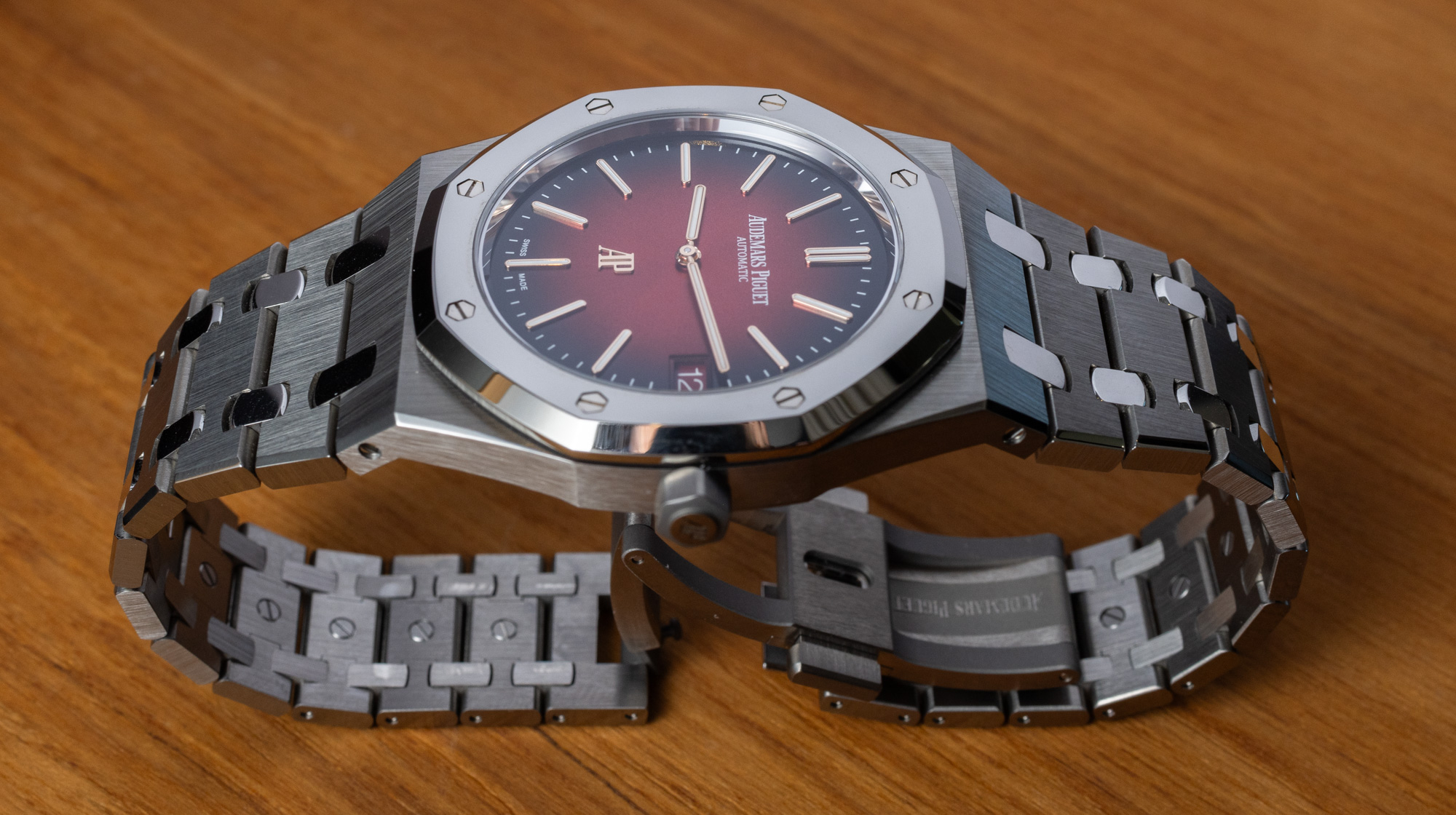
Audemars Piguet uses bulk metallic glass palladium parts for the bezel, caseback, and smaller bracelet links. The rest of the reference 16202XT.OO.1240XT.01’s case is in normally-formed titanium. The resulting watch feels light on the wrist, in a sporty way that is a welcome alternative to the also nice experience of wearing a heavier all-gold Royal Oak case. The case is 39mm wide and just 8.1mm thick. It has a flat AR-coated sapphire crystal over the dial (as well as caseback) and is water-resistant to 50 meters. The fit and finishing are impressive, and as the Royal Oak has over the years, it really impresses on the wrist.
Inside this Royal Oak “Jumbo” Extra-Thin watch is the Audemars Piguet caliber 7121 automatic movement. This movement was meant to replace an aging automatic movement platform that enthusiasts hoped Audemars Piguet would upgrade for years. The caliber 7121 is a beautiful-looking mechanism with considerable decoration and attractive architecture. It operates at 4Hz with a power reserve of 55 hours. It does this between two mainspring barrels, which instead of acting to help increase power reserve, in this mechanism act to promote isochronism (accuracy over time) through the release of more consistent power. The caliber 7121 movement is made up of 268 parts and uses a solid gold automatic rotor offering the time and date. Note that the seconds hand has been removed from the movement in order to make the watch thinner as well as more elegant (as has been done in the past as well, of course). I think for a watch this pretty you can live without a seconds indicator — though as a mechanical watch lover, I can see why it would be missed. My dream version of this watch (outside of being produced from all bulk metallic glass) is for the “AP” logo to spin around and act as a discreet subsidiary running seconds indicator.
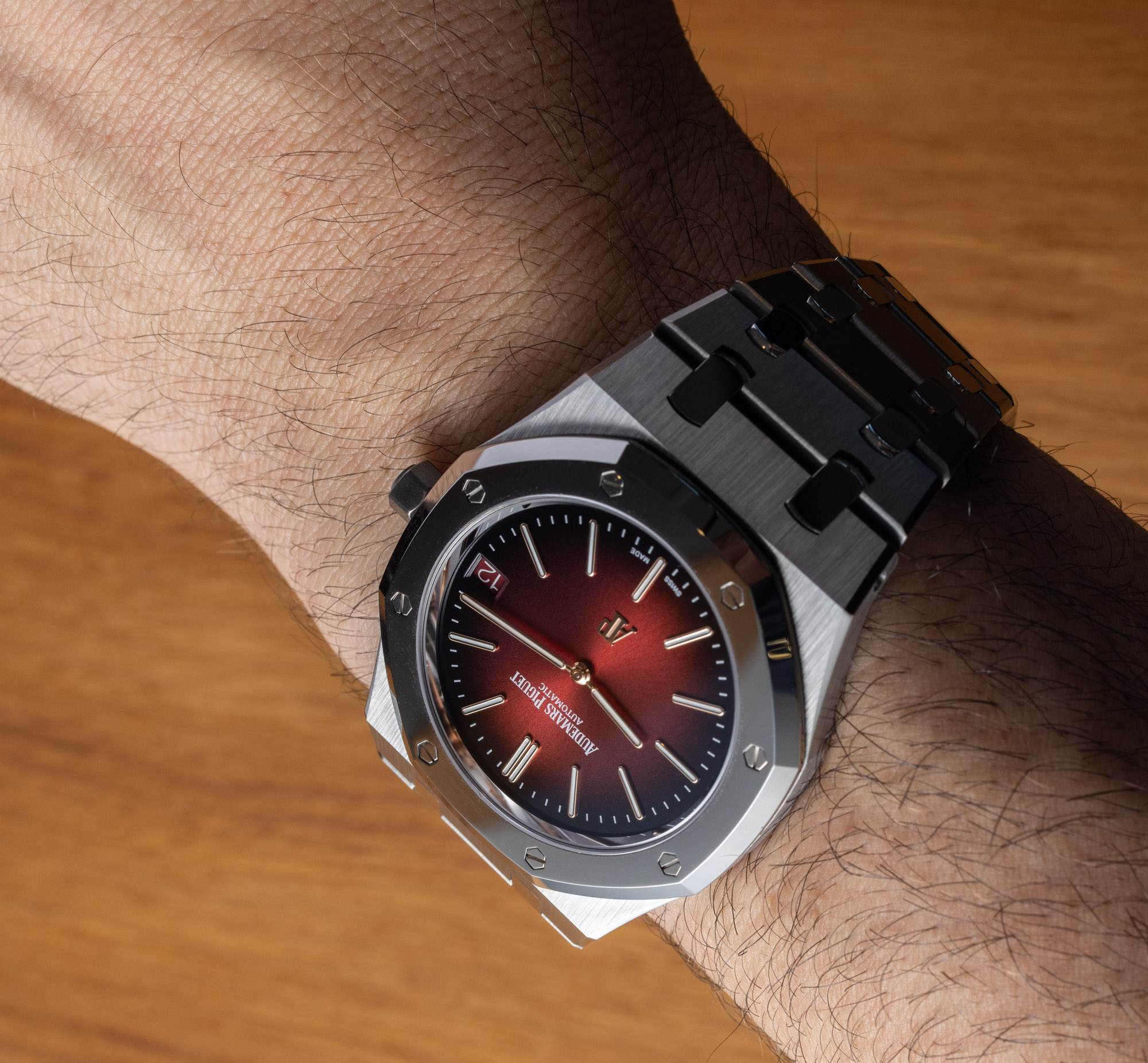
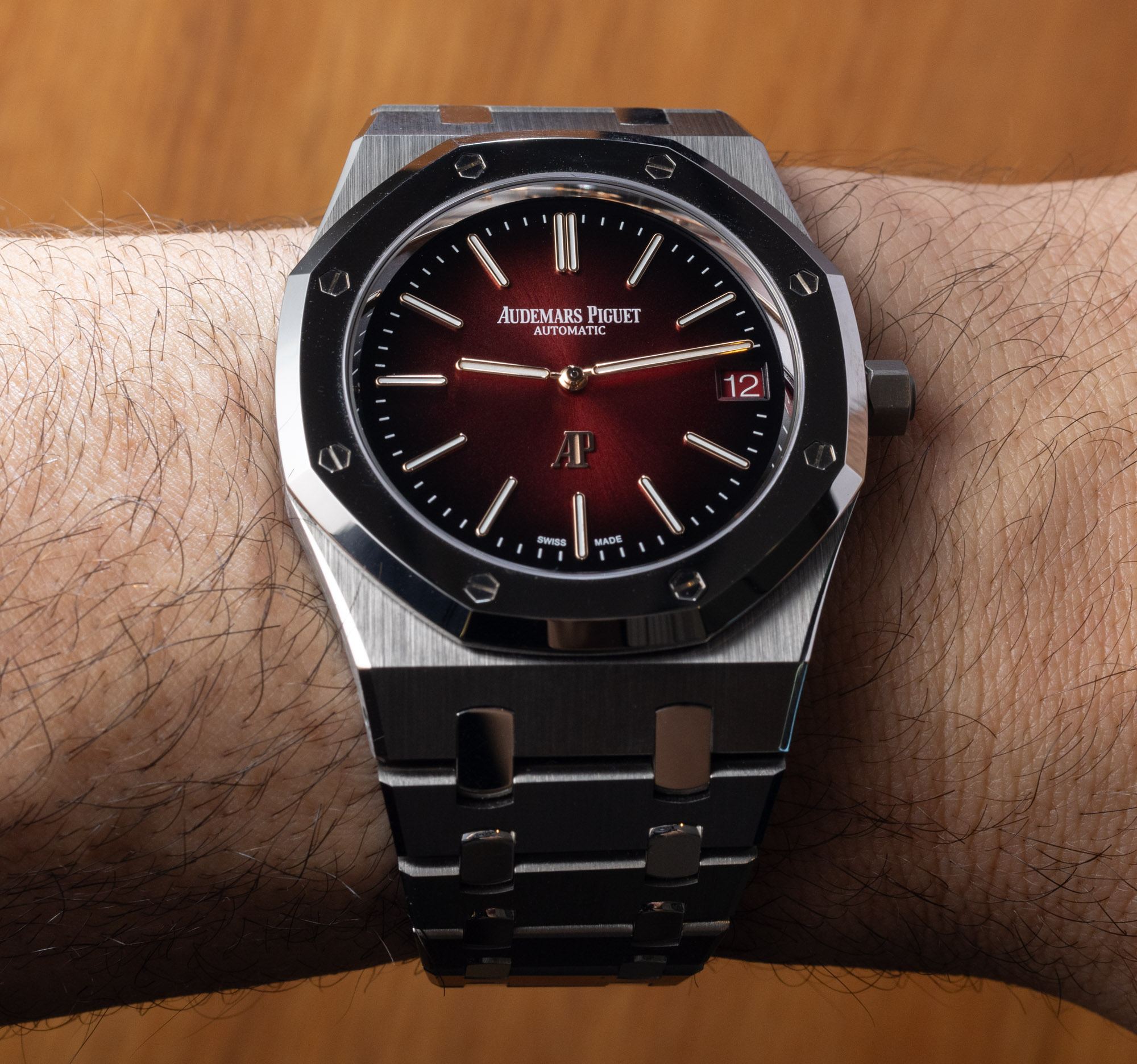
In addition to expecting more bulk metallic glass in the future, I also anticipate more red-colored and burgundy-colored dials (I wrote about this a few months ago when anticipating watch color trends) to come soon. Not only from Audemars Piguet, but other brands. So that makes this particular smoked burgundy, bulk metallic glass palladium and titanium Royal Oak “Jumbo” Extra-Thin 39mm a bit of a trendsetter. The price for this Audemars Piguet Royal Oak reference is 16202XT.OO.1240XT.01 is $96,400 USD. Learn more at the Audemars Piguet website.


